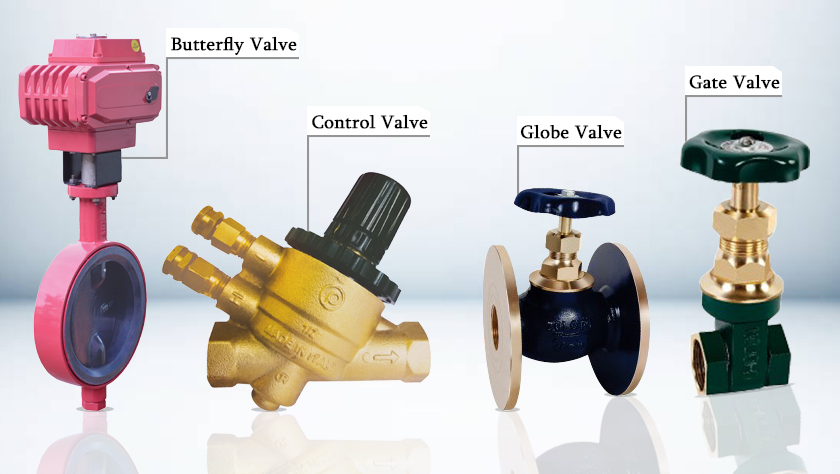Innovative Control Valves: Enhancing Precision and Reliability
Achieve Seamless Integration and Control With High Quality Building Automation Controls
In the realm of modern-day structure management, the importance of top quality structure automation controls can not be overstated. As technology proceeds to development, the combination and control of various systems within a structure have evolved to be more efficient and advanced. The smooth procedure and surveillance of illumination, HEATING AND COOLING, security, and other building functions have actually ended up being vital for improving occupant comfort, power performance, and general operational performance. The journey towards achieving true integration and control is a multifaceted one, with considerations varying from system compatibility to cybersecurity. Embracing high quality structure automation controls is not just a matter of convenience however a critical critical for organizations aiming to maximize their centers' performance and sustainability.

Evolution of Building Automation Controls
Throughout the past few years, the evolution of developing automation controls has actually dramatically transformed the means structures are handled and operated. Originally, building automation systems largely concentrated on fundamental functions such as managing air, ventilation, and home heating conditioning (HEATING AND COOLING) systems. Nevertheless, as modern technology progressed, these controls have come to be more advanced, permitting for a broader array of building systems to be integrated and managed centrally.
The evolution of constructing automation controls has seen a change in the direction of even more intelligent systems that can adjust to changing problems in real-time. This flexibility is vital for maximizing power performance and making certain resident comfort. Additionally, modern building automation controls currently provide attributes such as predictive maintenance, remote tracking, and data analytics, allowing facility managers to make data-driven decisions to improve structure efficiency.

Advantages of Quality Combination
The advancement in building automation manages in the direction of even more intelligent systems has highlighted the substantial advantages of top quality integration in optimizing building operations and improving total efficiency. This centralized control also offers much better presence and understandings into building performance, enabling proactive maintenance and optimization methods. On the whole, the advantages of quality integration in building automation controls are undeniable, providing boosted performance, comfort, and operational effectiveness.
Improved Individual Experience and Accessibility
Enhancing individual interaction with building automation manages via user-friendly layout and enhanced access boosts the overall experience for occupants and center supervisors alike. By concentrating on individual experience, developing automation systems can become more user-friendly and reliable. Intuitive interfaces, clear navigating, and adjustable settings empower customers to connect with the controls quickly and efficiently.
Ease of access features play an essential role in making certain that all individuals, including those with handicaps, can use the building automation controls easily. Including functions such as voice commands, responsive buttons, and color-contrasted display screens can boost availability and make the controls much more comprehensive.
Additionally, improved customer experience results in greater user complete satisfaction, raised efficiency, and better decision-making. Owners can readjust environmental setups according to their preferences, while center managers can effectively keep an eye on and handle building systems - control valves. On the whole, focusing on user experience and access in building automation manages adds to a more efficient and smooth building atmosphere for all stakeholders entailed
Lasting Practices Through Automation

Moreover, automation can assist in the integration of sustainable power sources such as photovoltaic panels or wind generators into building procedures. By automatically changing power use based on the schedule of renewable resource, buildings can better decrease their dependence on non-renewable resources. This seamless assimilation of sustainable practices not only profits the setting but also improves the total functional efficiency and cost-effectiveness of the building. Through automation, buildings can line up with modern-day sustainability objectives and add to a greener future.
Future Trends in Structure Control Equipment
One prominent pattern shaping the future of building control systems is the increased combination of Artificial Knowledge (AI) and maker learning. Furthermore, the Internet of Things (IoT) is revolutionizing building control systems by attaching gadgets and sensing units to improve and enhance operations performance.
One more key fad is the focus on cybersecurity steps to shield against prospective dangers to developing automation systems. As structures come to be extra interconnected, guaranteeing robust cybersecurity methods will certainly be important to guard sensitive data and stop unapproved access.
Furthermore, special info the change in the direction of cloud-based systems is gaining momentum, enabling for systematized control and remote access to building systems. This helps with much easier surveillance, maintenance, and updates, improving the general efficiency and adaptability of building control systems. As innovation remains to advance, these patterns are anticipated to form the future landscape of structure automation controls, driving innovation and sustainability in the built environment.
Final Thought
Finally, building automation controls have evolved considerably, providing various benefits such as enhanced user experience, availability, and sustainable methods. Quality combination plays a crucial function in accomplishing smooth control and reliable procedure of building systems. Future trends in structure control systems are most likely to focus on additional enhancing automation capacities for boosted power performance and general performance. It is important for building proprietors and drivers to focus on the adoption of high quality structure automation regulates to optimize structure procedures and achieve long-term sustainability objectives.
In the world of contemporary structure administration, the importance of top quality building automation controls can not be overemphasized. In general, the advancement of building automation regulates continues to drive development in the building management market, offering new opportunities for producing smarter and extra sustainable structures.
The development in structure automation controls towards even more smart systems has emphasized the significant advantages of high quality assimilation in optimizing structure operations and improving total effectiveness. Overall, focusing on individual experience and accessibility in building automation regulates adds to a more effective and seamless structure environment for all stakeholders included.
It is important for building proprietors and drivers to focus on the adoption of quality building automation manages to maximize structure operations and accomplish lasting sustainability objectives. - control valves